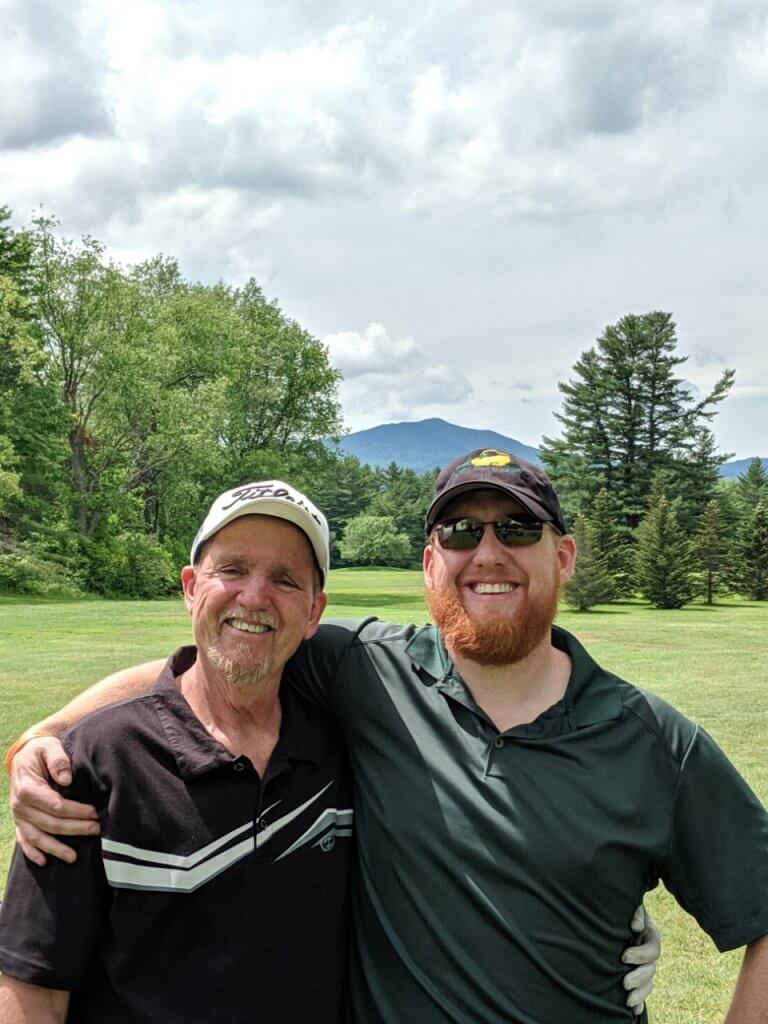Excited to be the first patient in a novel clinical trial, Jon Woods is hoping that an infusion of immune natural killer cells donated by his son will beat back the metastatic cancer he has battled for four years.
“I’m upbeat [and] I’m happy to be a pioneer,” says Woods, 65, a retired postal worker from Essex Junction, Vermont, whose cancer originated in the back of his throat and spread to his lungs.
Dana-Farber physician-scientists say the trial is an unprecedented test of whether therapy with natural killer cells — or NK cells — can improve outcomes in advanced head and neck cancer.

The promise of NK cells
Unlike other immune cells such as T cells, NK cells make up a minority of immune white blood cells. They serve as first responders to the presence of abnormal cells and cancer cells, but they tend not to persist very long in the bloodstream.
Efforts in recent years to use natural killer cells for cancer therapy have proved promising in blood cancers, but thus far they have been less successful in treating solid tumors. But the cells that will be used in the new clinical trial at Dana-Farber are what Rizwan Romee, MD, calls “memory-like” NK cells which have been shown to endure longer in the circulation. These special NK cells have been supercharged with cytokines interleukin (IL) 12, IL-15, and IL-18, “which enables them to live for many months and have stronger antitumor effects,” says Romee.
In addition, to the NK cells donated by his son, Woods will receive an immunotherapy drug, ipilimumab, aimed at counteracting “regulatory T cells” that inhibit the immune response, and injections of a potent form of interleukin 15 to activate the infused NK cells.
A collaborative effort
This three-pronged experimental attack on metastatic head and neck cancer is a collaboration between Romee and Glenn Hanna, MD, a head and neck oncologist at Dana-Farber, that began several years ago when the two met each other following a talk given by Romee about this research.
“This is the classic way at Dana-Farber, where people are talking in the hallways, then suddenly ideas fly and some great science happens,” says Romee.
Hanna had studied the immune environment of head and neck cancers; his and other observations suggested that NK cells might be important in fighting these tumors. An intriguing finding was that patients with tumors that had been more highly penetrated by NK cells had better prognoses. “That’s one of the reasons we got excited” about using NK cells in head and neck cancers, says Romee. He and Hanna worked over the next several years to design a clinical trial protocol that would deploy donated NK cells from a “half-matched” donor — for example, the child of a patient.
One important source of funding for the trial came from the Massey Family Fund, created by the family of a patient who faced both hematologic and head and neck cancer. Another source is Gateway for Cancer Research, a nonprofit organization that funds transformational early-phase cancer research.
Designing the trial
The NK cell trial is intended for head and neck cancer patients who, like Woods, have exhausted standard treatments that have failed to eliminate the tumors. His treatment in 2016 for the cancer in the back of his throat was a combination of radiation and chemotherapy, which shrunk the tumor initially. But eventually it recurred and by 2018 it had spread to his lungs.
Woods then underwent treatment with other drugs and the immunotherapy agent pembrolizumab, which targets the PD-1 checkpoint on cancer cells, and another experimental immunotherapy drug, to which he did not respond. Hanna enrolled Woods as the first patient in the NK cell trial, noting that Woods except for the cancer is healthy and enthusiastic about volunteering for the experimental regimen.
As a first step, patients like Woods receive a dose of an immune checkpoint blocker, ipilimumab, to target regulatory T cells in the tumor microenvironment that might be suppressing his body’s immune response. Next, he will receive several days of chemotherapy to eliminate cells in the bone marrow, preparing it for the infusion of NK cells that will be collected from his son’s blood stream. The NK cells then will be treated with cytokines and processed in the Connell and O’Reilly Cell Manipulation Core Facility and on the following day they will be infused into Woods’ circulation while he is a hospital inpatient.
Finally, he will receive four doses of interleukin 15 — a special formulation Romee calls a long-acting “superagonist” designed to make the NK cells “more trigger-happy” — attacking the tumors more vigorously. The NK cells, in addition to directly fighting the cancer cells, are expected to secrete a form of interferon that will help overcome the suppressive immune environment of the tumors, says Romee.
The proof will come in about 90 days when Woods will undergo imaging to see if the trial regimen has shrunk the tumors.
“If it goes well, the patients in the trial wouldn’t need further therapy or might be able to go many months to years without additional treatments,” says Hanna. While that remains to be seen, he says that previous NK treatments in blood cancer patients reported by Romee “have shown durable benefit over many, many months.”
